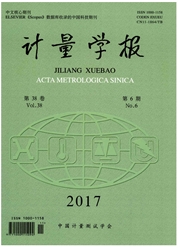

 中文摘要:
中文摘要:
在旋转机械的故障诊断中,希尔伯特-黄变换(HHT)方法常用于提取故障特征信号以及分解结果的时频分析,然而,在HHT中会出现端点效应问题,且导致模态混叠和虚假本征模态函数(IMF)等一系列问题。针对这一问题,提出了利用广义回归神经网络(GRNN)和边界局部特征尺度延拓(BLCC)相结合的方法先对信号延拓,再进行经验模式分解(EMD)。通过仿真与故障实验,在时域、频域和希尔伯特-黄谱的相关参数的情况下,对比镜像延拓优化的HHT分解结果,验证了所提方法的有效性。实验结果表明:所述方法能够有效地抑制HHT中的端点效应,且减轻了模态混叠和虚假IMF分量,同时能准确地表现信号的真实结构成分。
 英文摘要:
英文摘要:
In fault diagnosis of rotating machinery, Hilbert-Huang transform (HHT) is often used to extract the fault characteristic signal and analyze decomposition results in time-frequency analysis. However, end effect occurs in HHT, which leads to a series of problems such as modal aliasing and false intrinsic mode function(IMF). To solve this problem, a novel method to optimize end effect in HHT through combination of generalized regression neural network (GRNN) and boundary local characteristic-scale continuation (BLCC) to extend signal is proposed, then followed by empirical mode decomposition (EMD). Simulation and measurement experiment for the conditions of time domain, frequency domain and related parameters of Hilbert-Huang spectrum verified the effectiveness of the proposed method through comparison with the results obtained by mirror continuation. The experimental results show that the method can effectively inhibit end effect, reduce modal aliasing and false IMF components, and accurately show the real structure of signal components.
 同期刊论文项目
同期刊论文项目
 同项目期刊论文
同项目期刊论文
 期刊信息
期刊信息
